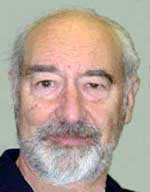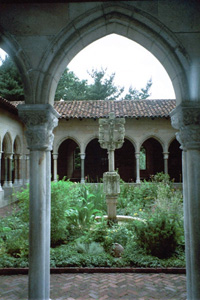Seeing History
Forgery
One learns to read the sources. Very good. It must next be recognized that the sources may lie. Ancient inscriptions and modern intelligence reports are likely to say what ancient kings wish their subjects to believe, or what modern operatives think their superiors want to hear, or what both parties hope posterity will accept. Not knowing this is the Marco Polo Bridge error. What is the Marco Polo Bridge error? A student was being examined on a thesis about the Marco Polo Bridge Incident of July 1937, which touched off the Asian half of WW2. She was asked what was her source for a particular statement. She replied, Japanese government documents. The examiner responded, "I was there. It's not true."
And as a further complication, the documents themselves may be forgeries, lies written in a later period and palmed off as early for reasons of personal or philosophical advantage. Whole stretches of ancient Chinese texts, and whole repertoires of plays attributed to Plautus, fall into this class. This enormously complicates the task of appreciating the art of Plautus from the plays, or reading Chinese history from the texts. If there is a demand, there will be a supply, and the fake stuff supplied will tend to poison any genuine data. One early 20th century scholar estimated that, of all Chinese oracle bones then known, about 90% were fleamarket fakes.
It does not make any difference if you are emotionally engaged. On the contrary: if your emotions are engaged, you are already in serious danger. As witness this parable:
There was a man who was born in Yen but grew up in Chu. In old age he returned to his native country. While he was passing through the state of Jin, his companions played a joke on him. They pointed out a city, and told him, "That is the capital of Yen." The man looked solemn. Inside the city, they pointed out a shrine, saying, "This is the shrine of your neighborhood." The man heaved a deep sigh. They pointed out a hut, and said, "That was your father's cottage." His tears welled up. They pointed out a mound, and said, "This is your father's tomb." The man could not help but wail aloud.
His companions roared with laughter, "We were fooling you. This is still only Jin." The man was tremendously embarrassed. When he later reached Yen, and saw the actual capital of Yen and the shrine of his neighborhood, when he really beheld his father's cottage and tomb, he did not feel it nearly so deeply as he had before.
Detecting forgeries, not falling for frauds, is thus a crucial preliminary. But that preliminary can be difficult to carry through. And why? For one thing, because the very idea of forgery is inconceivable to many modern persons. Historians on the whole are quiet folk, who cross on the light and pay their electric bills on time. They would never show somebody else's ID to the bartender, or solicit sidewalk donations for a nonexistent charity. In the nature of their work, they stay home a lot, and thus rarely or never make contact with the kind of people who jaywalk, kite checks, or paint Renoirs. "Why," they ask, and for such peaceable and exemplary people it is a reasonable question, "would anybody want to forge something?"
To make the idea real, it may help to make contact with a less armchair world, one in which forgery is a daily experience; part of the landscape. The art world is such a world. The excerpt below is from John McPhee's profile of that capable scamp Tom Hoving, whose zest for the big picture permanently changed the way American museums are run. Hoving is describing what forgers do:
"They put on a piece something that will draw most of your attention, such as a simulated antique repair. They usually do it so the repair looks kind of rinky-dink. We once discovered that we had [in the Metropolitan] a forgery in which the forger had taken old wood and old canvas, painted it, rolled it, created beautiful cracquelure, damaged the whole thing, and restored it in three different styles. It was beautiful, and well it might have been. The forger was the father of one of the greatest painters of the twentieth century.""Steingräber taught me that wormholes made by real worms are L-shaped. The test is, you pluck out a hair and push it into a wormhole and see if it bends. Punched holes don't bend. However, I once came upon a piece that was supposed to be fifteenth century German wood sculpture, and I learned that the maker had used actual worms to eat the thing."
"A wise forger will make an error - an explainable error - because he knows that inconsistency can be a mark of genuineness, if the matrix of the inconsistency is right. We have two beautiful fifteenth century silver censers. One is authentic, and the other is an unbelievably beautiful copy. The forger put his toolmarks on the old piece."
"I love forgeries! I love the forger's mentality! Once, with two carvers and two other art historians, I tried to make an ivory forgery myself, so I would have the experience. Why ivory? For one thing, no scientific test will show you a damn thing about ivory. We picked an epoch from which there are two known dated pieces, vastly different from each other. One is classical, one is hieratic, and they were both made in Rome around AD 400. We decided to do a classical one. Old senatorial families in that era ordered classical ivories, because they were trying to look ancient - like members of the Racquet Club trying to recapture imperial days. There are ways to age modern ivory. You put it on a roof for a while and let the elements do it, or you bake it in a tin box with pine needles, or you skin a rabbit and bury the ivory in the skin. We did it with the pine needles. To get a smooth patina, I rubbed the ivory on the inside of my thigh for hours and hours. We removed dust from the interstices of an old ivory and applied it to the new one. Then we showed it to five experts. Four thought it was real. Later, we destroyed it . . ." (McPhee p23-24)
Detecting forged documents largely belongs to the ancillary field of philology, but all practitioners need to have at least a feel for the subject. In art terms, they need to have a modicum of connoisseurship. Those with a practiced eye can spot an art fake without necessarily saying exactly how. Hoving yet again:
"When you consider a work of art, what do you do? The process is basically intuitive, but it is good to have a guideline. Write down that absolutely immediate first impression, that split second. Write anything. "Warm." "Cool." "Scared." "Strong." In six years of studying hundreds of items for the Museum, I never ended up feeling warm about something I had written "Cool" about, or the reverse. Then ask yourself: Does it have a use? A purpose? If it's a late fourteenth-century casket, say, has it been used? Look where it has been worn. Is the wear haphazard? Forgers cannot possibly reproduce that. Many forgeries fall down because things have not been used. In the Middle Ages, nothing was made just to be observed. Everything had a purpose, either as an icon or as something else. Once, with Erich Steingräber, I studied a finger reliquary that was in a storeroom at The Cloisters. The piece had a ring on it that could not be removed. Rings were usually later gifts, placed on finger reliquaries as a kind of homage. Steingräber was very suspicious. On the ring was a fine emerald. Gems on reliquaries are usually not of top quality. The reliquary was riveted together, and there was no way to get into it. Reliquaries were not tombs. There were times when their liturgical use required that the actual relic inside be handled directly. All these items built up, and the thing began to disintegrate. We removed the rivets and found that the interior could not have held a finger. We eventually discovered that the thing had been made in a workshop in Paris for a man with a gem collection who loved reliquaries. You peel a work of art like an onion. Shred every layer from it. Is it in the style of the time? How many styles exist within it? Study the iconography and the manner in which it is handled. What does it intend to say? Parallels, parallels, always seek parallels. Use scientific means - ultraviolet light, X-rays, and so forth - but always in context with your eye. Scientific analyses can be used for or against a work, like statistics. Your eye is king. Get in touch with other scholars - everybody you think is expert . . . Learn the history of the piece - where it is from, what collections it has belonged to, all the information surrounding its discovery. Then get the work of art with you and live with it as long as you possibly can. You have to watch it. Watch it. Come across it by accident. I used to have the staff at The Cloisters put things where I would come across them by accident. A work of art will grow the more it is with you. It will grow in stature, and fascinate you more and more. If it is a fake, it will eventually fall apart before your eyes like a piece of plaster." (p22-23)
This will suggest how the discerning eye is built up by experience. It is partly a process of providing the discerning eye with a discerning mind in back of it. An encyclopedic mind. As Hoving puts it, "If you are going to buy early Christian glass, you know all the known early Christian glass."
All. Think about it. And to return to texts, which are the basis of much historical understanding: there too, a preliminary survey of true and false is indispensable, before spending curatorial funds, or elaborating a historical interpretation. Yau Ji-hvng, writing circa 1700, put it this way:
Many spurious books have been produced in ancient and modern times. Can a scholar who does not trouble to distinguish between genuine and spurious be called a scholar at all? To make that distinction is the first duty of scholarship.
Yau's own little book, to which that remark is prefatory, contains brief discussions of 91 dubious texts. Separately, he had written a treatise exposing half of the revered and canonical Shu documents as later forgeries. In terms of culture shock, this was like somebody walking through the Rijksmuseum and identifying every other Rembrandt as a fake. And as for the other half of the Shu documents . . .
Nor does forgery cease in the modern world, as Duyvendak among others found to his cost.
There's one born every minute. Try to have it not be you.
Readings
- Hugh Trevor-Roper. The Hermit of Peking
- The Marco Polo Bridge Fallacy
- J J L Duyvendak and The Diary of His Excellency Ching-shan
- John McPhee. A Roomful of Hovings
- The Horn Papers Fraud (see also Robin Winks, The Historian as Detective)
17 Dec 2006 / Contact The Project / Exit to Outline Index Page


